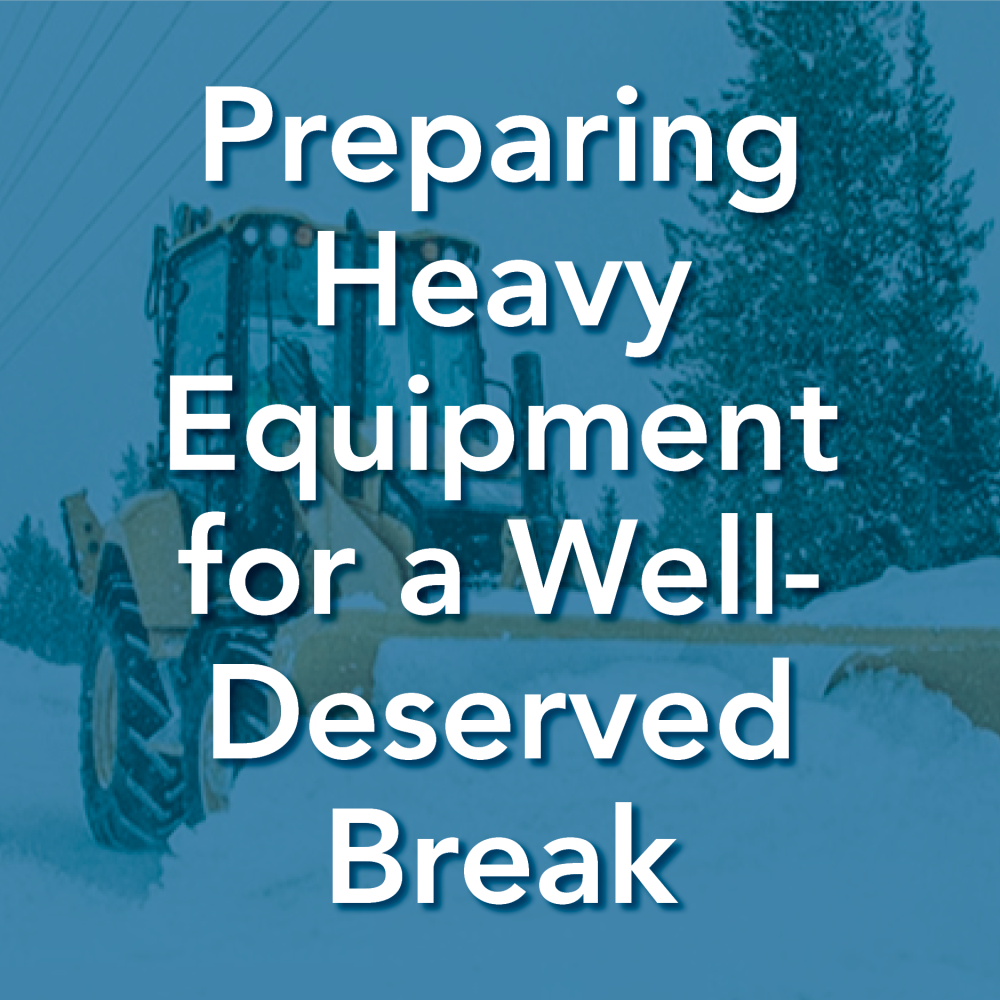
Like it or not, winter has arrived. For some, this means the construction season is winding down and your equipment is about to get a little well-deserved time off. Or perhaps you're getting ready to park your fleet in storage. Either way, prepping your machines properly for their downtime now will save downtime come spring.
Hopefully you find this quick winter storage checklist helpful:
• Clean the entire machine. Yes, the entire machine. That includes the engine compartment, the undercarriage on tracked machines and the inside of the cab. Remove all dirt, grease and debris. Just think about how nice it'll be pulling the same machine out of storage come spring and the cab is already spic and span.
• Lubricate any moving parts, including hinges. This will reduce friction and protect them from damaging cold temperatures. Use a high viscosity lubricant --- it won't drop off your equipment in the freezing temps and it coats parts better than low viscosity grease. It's also a good idea to start the machine regularly to keep the engine and all its components lubricated while in storage.
• Top off fuel and fluids. This helps in preventing condensation in the tanks, which can lead to startup issues next season. Also think about adding a fuel stabilizer.
• Check fluids and filters. If you're getting close to your next preventative maintenance internal, replace them before storing the machine. Otherwise, maintain your normal maintenance schedule during storage.
• Check the machine's tire pressure. You may want to slightly overinflate the tires to avoid flattening over time, especially if the machine is going to sit cold the whole time it's enjoying break-time.
• Disconnect the battery. Store it in a cool, dry place where the temperature stays above 32°F.
• Remove and inspect any attachments. Store them in a separate place, also at room temperature (32°F); this will protect hoses and connections from the colder temps and make them easier to attach when they're needed again.
Perform a thorough walkaround. This is the time to check for damage and wear and tear on the machine. Be sure to pay special attention to hydraulic hoses and fittings, which can be more susceptible to cracking and ultimately failure in colder conditions. Repair or replace now, if possible, or make sure to do it right away at the start of the new season.
• Protect the machine from the elements. Store it indoors or in a dry, protected located where it's not exposed to direct sunlight and wind. Use protective covers like cribbing and crane mats to keep out the dirt and moisture that can cause rust. A tarp covering also adds protection from the elements, if an indoor option isn't readily available.
• Tag the machine to indicate it's in storage condition. This will help keep crew members and others from unknowingly putting it into service before its ready and prepped for a working environment.
-------
When all else fails, it's always a good idea to start with each machine's Operation & Maintenance Manual, which will include model-specific storage instructions. But, if the machine's manual can't be found, this handy list will put you on the right path for your fleet to enjoy a relaxing break from the action.